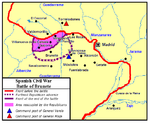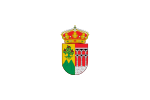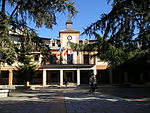Las Rozas de Madrid (or simply, Las Rozas; Spanish pronunciation: [las ˈɾɔθas]) is one of the largest townships and municipalities in the autonomous community of Madrid, Spain, with an area of 59 km² (22¾ sq. mi.)[1]. It is located 20 km (12 miles) northwest of the city of Madrid itself, on the A-6 freeway to A Coruña. Las Rozas is the beginning of this freeway, near the fork road M-505 to El Escorial, which marks the southern boundary of this 'comarca' or rural district (although it is no longer rural).
The municipality is served by four Renfe railway stations– Las Rozas, Las Matas, El Pinar and El Tejar. A fifth stop, at Peñascales was closed. The municipality shares borders with Torrelodones to the north, Villanueva del Pardillo and Galapagar to the west, the park of Monte del Pardo in the east and Majadahonda (south).
Las Rozas has one of the highest average per capita incomes in the Community of Madrid.
During the final decades of the 20th century the town has experienced a vigorous building program, mostly as a dormitory town for Madrid, with a correspondingly strong population growth, which more than doubled between 1991 and 2005 (from 35,137 to 76,246 inhabitants).
The provisioning for local services (such as schools and new dwellings) has at times been outpaced by the locality's high birth and immigration rates. However, by 2010 the community was well served in all health, education and social sectors.









